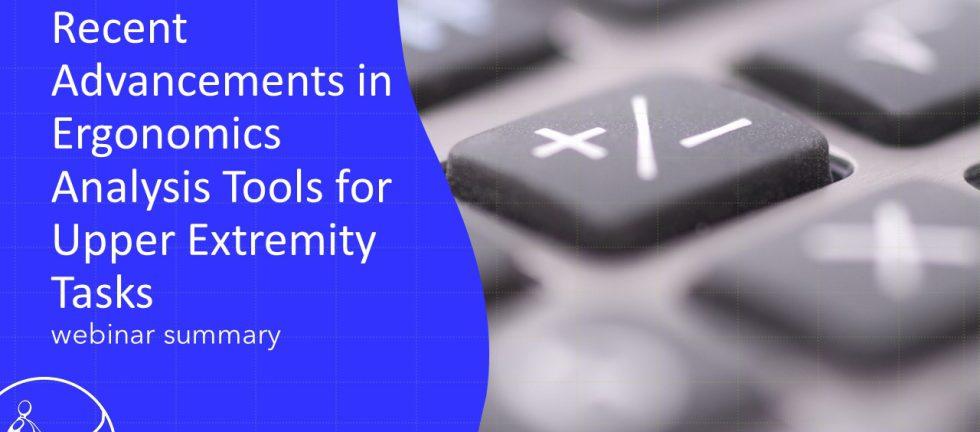by Alex DaRosa
This April 28, 2022 webinar, hosted by the Association of Canadian Ergonomists (ACE) and facilitated by Dr. Jim Potvin of Potvin Biomechanics, provided updates on the most recent advancements in analysis tools for upper extremity tasks.
Dr. Potvin provided details and demonstrations of the latest versions of assessment tools that he has developed or collaborated on over the years, including:
- HandPak – used to evaluate grip, pinch, finger and wrist push/pull/twist demands
- Arm Force Field – a recently developed tool that provides a more accurate assessment of the forces that act on the upper extremities
- Maximum Acceptable Effort (MAE) – used to assess a specific, forceful task, without looking at all the low-intensity tasks that may occur on the job
- Recommended Cumulative Recovery Allowance (RCRA) – used to estimate the risk associated with gripping, wrist, elbow (flexion and extension), shoulder, neck, and back demands of a variety of tasks within a job or rotation. This is one of the only tools that allows us to account for different tasks over the course of a shift.
Participants were provided limited-time access to the HandPak tool via the Potvin Ergonomics website and were provided the opportunity to demo the software in real-time.
Dr. Potvin also provided up-to-date copies of Arm Force Field, MAE & RCRA worksheets to participants, which allowed us to work through examples provided by Dr. Potvin as he explained how the tools worked. The updated Arm Force Field worksheet also integrated a new “Subacromial Impingement Scaling Factor” (SFSI), which takes into consideration the angle of key joints in the shoulder complex and their impact on the maximum force that can be generated.
Dr. Potvin provided some information about a new and exciting assessment tool he is currently developing called WORK(S), which will provide ‘one-stop shop’ access to current versions of his assessment tools!
As fervent users of these methods, the webinar was a good refresher for us. We look forward to trying out the new WORK(S) tool in the fall.


